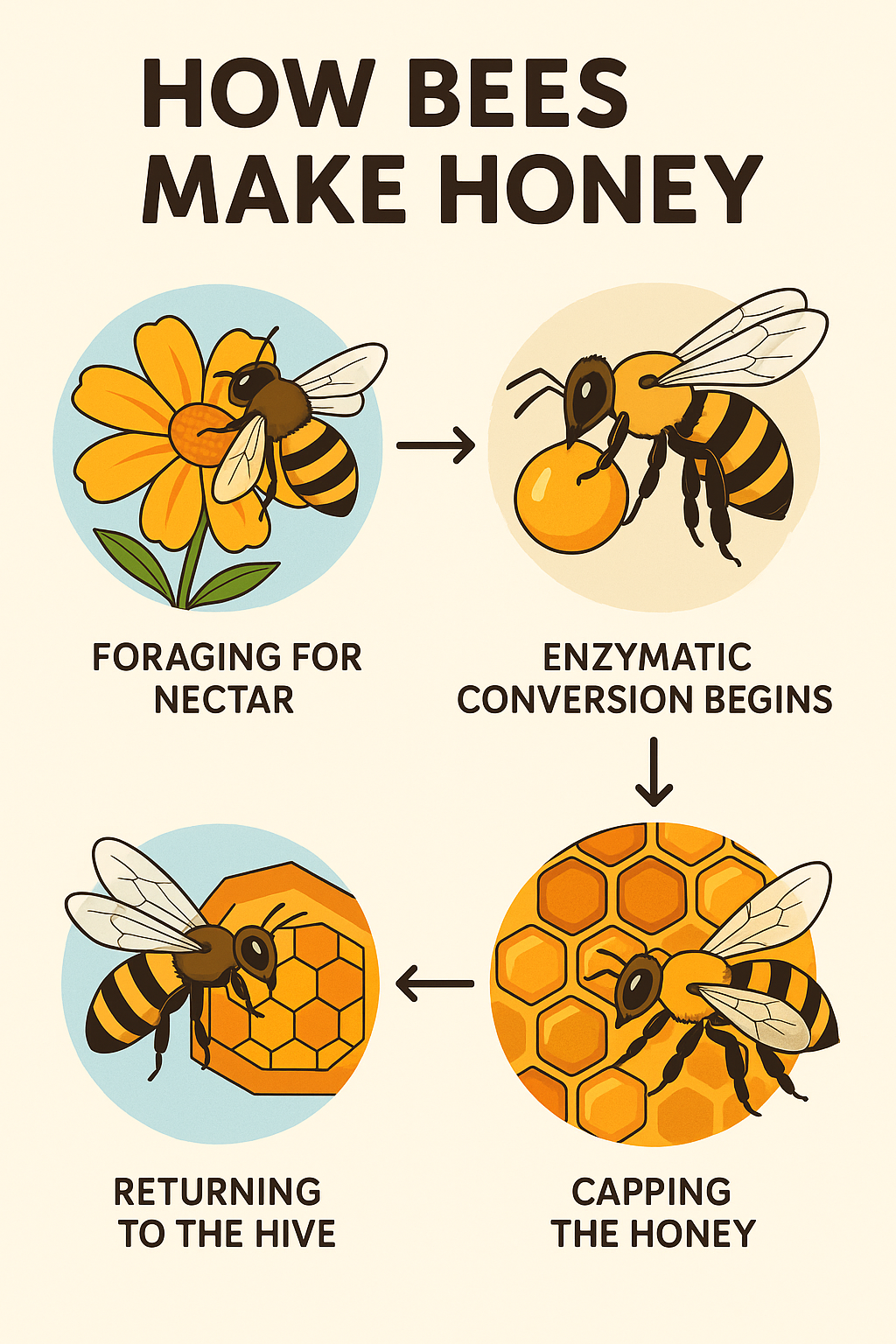How Bees Make Honey
Bees make honey through a fascinating multi-step process that transforms flower nectar into the thick, sweet substance we know as honey. Here’s how it works:
- Foraging for Nectar. Worker bees (usually 2–3 weeks old) fly out to flowers and use their proboscis (a long, straw-like tongue) to suck up nectar. The nectar is stored in a special “honey stomach” (not their digestive stomach), which holds it separately from food.
- Enzymatic Conversion Begins. Inside the honey stomach, an enzyme called invertase begins breaking down the nectar’s main sugar, sucrose, into glucose and fructose.
- Returning to the Hive. The forager bee returns to the hive and regurgitates the nectar into the mouth of a house bee. This bee chews the nectar for about 30 minutes, continuing the enzymatic breakdown.
- Water Evaporation. The processed nectar is then deposited into hexagonal wax cells in the honeycomb. House bees fan the nectar with their wings to evaporate moisture. They beat their wings rapidly—up to 200 times per second—to circulate air inside the hive. This airflow helps evaporate excess water from the nectar. Nectar starts out with about 70% water, and bees reduce it to about 17–18%, making it thick and shelf-stable.
- Capping Honey. Once the honey is dehydrated to the right consistency, bees seal the cell with a thin wax cap to preserve it. House bees test the moisture (possibly using their antennae or mouthparts). When it’s ripe, they secrete wax from special glands on their abdomen. They use their mandibles (jaws) to mold this wax into a thin, airtight cap over the filled honey cell. This capped honey is stored and used as food for the colony, especially during winter.

Why Honey Doesn’t Spoil
Honey is only about 17–18% water, which is too low to support the growth of most bacteria, yeast, or mold. Microorganisms need water to grow, and honey simply doesn’t provide enough of it.
Honey is about 80% sugar (mostly glucose and fructose). This creates high osmotic pressure, which draws water out of microbial cells, dehydrating and killing them.
Honey has a pH between 3.2 and 4.5, which is quite acidic. Most bacteria and molds can’t survive in such an acidic environment.
Bees add an enzyme called glucose oxidase when processing nectar. This enzyme reacts with glucose to produce hydrogen peroxide, a mild antiseptic. It helps prevent microbial growth—especially when honey is diluted or exposed to moisture.
When stored properly (sealed and kept dry), honey isn’t exposed to moisture or air, which could otherwise introduce contaminants. In fact, archaeologists have found honey in 3,000-year-old Egyptian tombs still preserved and safe to eat!